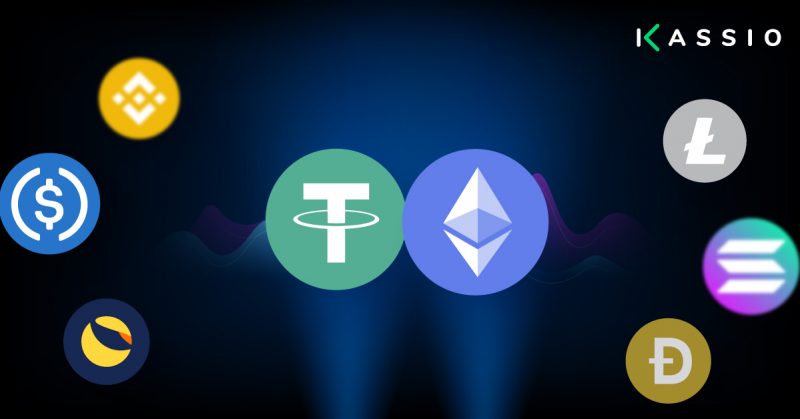The crypto industry is flourishing & attracting investors globally. Around 300 million investors have invested in cryptos worldwide, and each year is witnessing a remarkable increase in the number of investors. Due to the enhanced popularity of crypto, more people are inclined to learn & invest in cryptocurrencies.
In the learning journey of the crypto world, there is a popular myth among beginners that the crypto space revolves only around Bitcoin. But that’s not actually the case, though Bitcoin has unparalleled prominence, the industry is a lot more than just BTC. The crypto world has evolved over the years, and today there are more than 17,000 cryptos, excluding BTC, which includes Altcoins & stablecoins. These coins constitute a significant dimension of the crypto industry. Recently Altcoins and stablecoins have become the hottest topic of discussion among the crypto community. Let us understand in detail the fundamentals of Altcoins and Stablecoins:
What are Altcoins?
The term “Altcoin” is the combination of two words “Alternate” and “Coins”. By definition, the Altcoins include all cryptocurrencies except BTC, which work on the same principle as Bitcoin. They use blockchain as an immutable decentralized public database to validate and record transactions on their blockchain network. Most of the Altcoins are either forked from the Bitcoin or Ethereum network and in addition to it, many are based on different and their own blockchain network.
Altcoins are the enhanced versions of the original cryptocurrencies they are forked from. The developers introduce Altcoins with different visions to distinguish themselves from the original cryptocurrencies. They are released with new or extended features such as increased transaction speed, energy efficiency, etc., to overcome the perceived shortcomings of the original cryptocurrency.
A perfect example of Altcoin is Litecoin. It was forked from Bitcoin with faster transactions. Litecoin uses a different proof-of-work (PoW) consensus mechanism, called Scrypt, which consumes less energy than Bitcoin’s proof-of-work (PoW) consensus mechanism SHA-256.
Although the purpose of releasing Altcoins was to upgrade and enhance the functionality of cryptocurrencies, most of them are equally subjected to volatilities of the crypto market except stablecoins
What are Stablecoins?
Stablecoins are cryptocurrencies that are not designed to be less prone to price volatility by using the pegging mechanism. Its value is pegged/linked to relatively external stable reference assets like other fiat currencies, commodities, or other cryptocurrencies. The stablecoins attempt to bring the best of the fiat & crypto world to the users. They are created to offer agile features of crypto along with the stability of the fiat world. Unlike other volatile crypto, stablecoins can be used as a medium of exchange for day-to-day transactions. A few examples of stablecoins are DAI, Tether, etc.
Types of Stablecoins:
Stablecoins can be divided into 4 categories based on their fundamentals of pegging mechanism:
- Fiat-collateralized: Stablecoins which maintain a reserve of fiat currency like the U.S. dollar as collateral to assure the value of the stablecoin are classified as fiat-backed stablecoins. Eg. USDT, USDC
- Commodity-collateralized: These stablecoins are collateralized using a commodity such as precious metals (e.g., gold & silver), crude oil, real estate, etc. Its value is pegged to the commodity’s price to maintain its stability. E.g., Tether Gold (XAUT), Paxos Gold (PAXG).
- Crypto-collateralized: These stablecoins are backed by other cryptocurrencies. Since cryptocurrencies are susceptible to high volatility, these stablecoins are over-collateralized. E.g., Crypto worth 2 million will be backed by other cryptocurrencies worth of 4 million, to ensure against the 50% price drop.
- Algorithmic Stablecoins: The critical distinction between collateralized and algorithmic stablecoins is that algorithmic stablecoins are not backed by any kind of collateral. Still, their value is maintained by controlling their market circulations using a complex algorithm. Their value always depends on the supply & demand of the coins in the market. Eg. USDD on the Tron blockchain.
We hope this article helps you in understanding the fundamentals of Altcoins & Stablecoins. There are lots of cryptocurrencies to invest in but always keep in mind that the crypto world is still in its pre-maturation phase and is prone to high price volatility. Therefore, it is suggested that before investing in any cryptocurrency, you should do your own research (DYOR) to understand the fundamentals and make your investment strategies accordingly. To learn more about crypto investing, you can join our telegram community and follow our social media handles.






